Translation apps have become important tools for everyday communication across different languages. Whether it’s for travel, work, education, or casual conversation, these apps help users understand and express themselves with more ease. Many of them support features like voice input, real-time subtitles, text translation, and photo-based recognition, making multilingual communication more accessible than ever.
While ReciMe is not a traditional translation app, it can be useful when managing recipes from various countries or in different languages. Users can collect and organize global dishes, add notes or translations manually, and plan meals across cultures. This is especially helpful for people cooking for multilingual families or those interested in exploring international cuisine. Try ReciMe today and keep all your recipes, meal plans, and shopping lists in one place.


1. iTranslate
They offer translation across more than 100 languages through various input methods, including text, voice, and camera. Users can speak directly into the app to translate conversations, type text for instant translation with autocomplete support, or use the camera to translate printed text like menus or signs. The app is available on multiple platforms, including iOS, Android, macOS, and even Apple Watch, which allows users to translate on the go from nearly any device.
Additional tools include offline translation in selected languages, a custom keyboard for real-time translation within messaging apps, and a phrasebook for common expressions. Users can also view translation history, save frequent translations as favorites, and use alternative translations for better context. Other features like verb conjugation, transliteration, Siri shortcuts, and full-screen mode aim to make the translation process easier and more flexible across different scenarios.
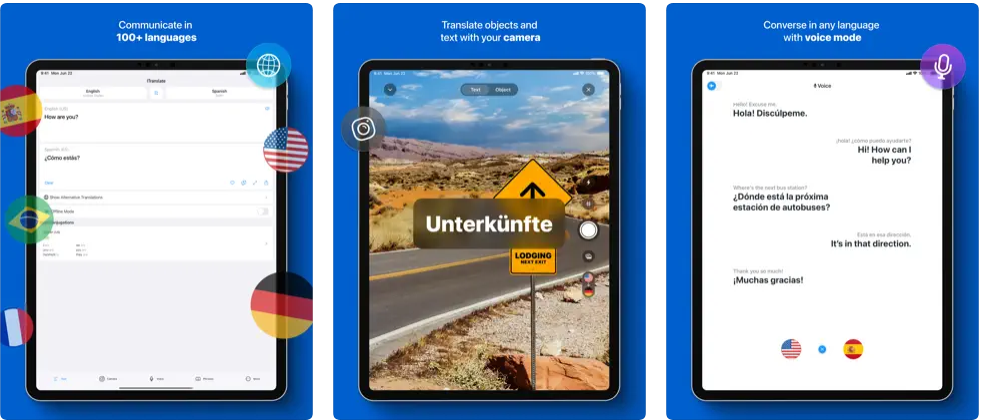
Key Highlights:
- Text, voice, and camera translation options
- Keyboard extension for in-app messaging translations
- Offline translation for select languages
- Phrasebook and verb conjugation features
- Alternative translations for added context
- Works across iOS, Android, macOS, and Apple Watch
Who It’s Best for:
- Travelers needing quick translations in various situations
- Users who want multi-device language support
- People who prefer both voice and text translation modes
- Those looking for offline language tools
- Individuals using messaging apps with people in other languages
Contact Information:
- App Store: apps.apple.com/us/app/itranslate-translator
- Google Play: play.google.com/store/apps/details
- Website: itranslate.com
- Facebook: www.facebook.com/iTranslate
- Instagram: www.instagram.com/itranslate
- Twitter: twitter.com/iTranslateApp
- YouTube: www.youtube.com/channel/UCp

2. DeepL
They focus on high-quality text translation, with support for typing, voice-to-text, and text-to-speech features. Users can speak or write in one language and get translated text along with alternative suggestions for short phrases. The app also includes the ability to take a photo and translate visible text, which is useful for menus, signs, and printed documents.
Users can translate documents, including Word, PDF, Excel, and PowerPoint files. A glossary function is also available for managing preferred terms. DeepL apps are available for Android, iOS, Windows, Mac, and several web browser extensions, supporting mobile and desktop use across different environments.

Key Highlights:
- Text translation with speech input and output
- Document and image translation options
- Grammar and spell-check tools
- Translation history and glossary support
- Works on mobile, desktop, and browser extensions
- Dark mode for visual comfort
Who It’s Best for:
- Users who translate full documents or work with files
- People who want grammar-corrected translations
- Professionals in business or academic settings
- Anyone needing multiple platform access
- Users looking for detailed alternative translation options
Contact Information:
- App Store: apps.apple.com/us/app/deepl-translate
- Google Play: play.google.com/store/apps/details
- Website: www.deepl.com
- Twitter: twitter.com/DeepLcom
- Facebook: www.facebook.com/DeepLcom
- LinkedIn: www.linkedin.com/company/linkedin-com-company-deepl
- Instagram: www.instagram.com/deeplhq

3. Google Translate
They provide a wide range of input methods for translation, including typed text, voice, camera, handwriting, and copy-paste from other apps. Users can translate without internet access by downloading language packs. The app supports real-time conversation mode, where both sides of a conversation are translated as they happen.
In addition to basic translations, users can upload entire documents or enter website URLs for full-page translations. Google Translate also includes a phrasebook to save common translations and features like speech-to-text and text-to-speech. The app is available on Android, iOS and can be used directly in the browser.

Key Highlights:
- Translation via text, voice, handwriting, and camera
- Real-time conversation translation
- Offline mode with downloadable language packs
- Full document and website translation
- Phrasebook to save translations
- Works across mobile and desktop platforms
Who It’s Best for:
- Users needing flexible input options for translation
- People traveling without reliable internet access
- Anyone translating full websites or documents
- Individuals in real-time spoken conversations
- Users who want to save and reuse frequent phrases
Contact Information:
- App Store: apps.apple.com/us/app/google-translate
- Google Play: play.google.com/store/apps/details
- Website: translate.google.com
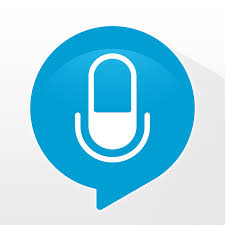
4. Speak & Translate
Speak & Translate supports both voice and text translation for over 100 languages. The app can detect the spoken or written language automatically and convert it into the desired output. Users can adjust voice settings like speed and gender, and access past translations through iCloud sync. Text and voice translations are available for free, while additional features come with a subscription.
Premium tools include Snap Mode for translating text using the device camera and Offline Mode for translating without internet access. Users can also access unlimited translations and use the app without ads.
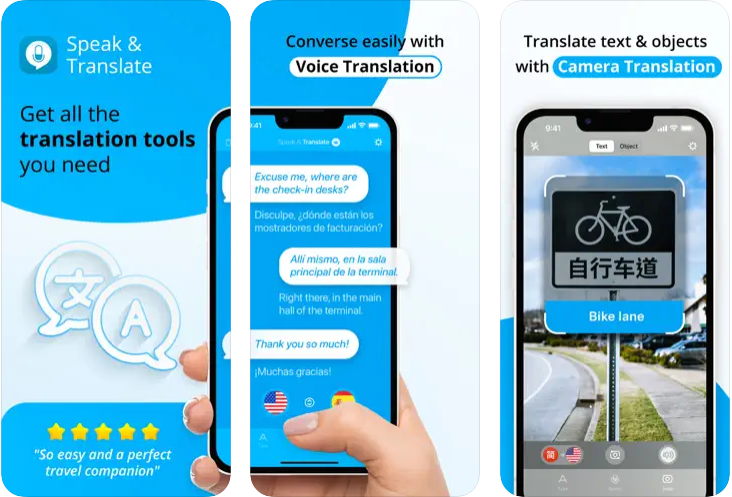
Key Highlights:
- Voice and text translation with automatic language detection
- Adjustable voice settings and speech playback
- Offline translation and Snap Mode via premium access
- iCloud sync for translation history
- Supports over 100 languages and dialects
Who It’s Best for:
- Users looking for multi-function translation
- Users traveling to places with limited connectivity
- People who need camera-based text translation
- Those who want to save translation history across devices
- Individuals who use both voice and text inputs
Contact Information:
- App Store: apps.apple.com/us/app/speak-translate-translator
- Google Play: play.google.com/store/apps/details

5. Vocre
Vocre focuses on voice and text translation with support for 59 languages. Users can speak into their phone and receive spoken or written translations instantly. The interface is designed for basic conversational use, especially in travel or casual settings. It includes a keyboard for manual text input and also supports translation playback.
The app offers offline translation through a subscription, which helps when internet access is limited or unavailable. Vocre also supports dark mode for easier viewing in low light. While the features are simple, the app is designed to help users communicate basic phrases without needing technical skills or advanced settings.
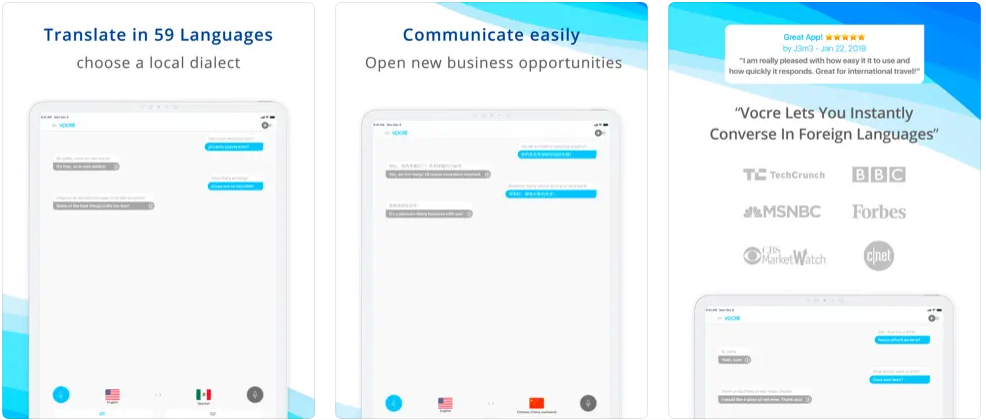
Key Highlights:
- Instant voice and text translation
- Offline mode available with subscription
- Simple layout for conversational use
- Dark mode supported
- Basic keyboard input for manual translation
Who It’s Best for:
- Travelers needing quick and easy translation
- Users with limited tech experience
- People who want a lightweight tool for basic communication
- Individuals looking for offline translation access
- Anyone who prefers minimal features and simple design
Contact Information:
- App Store: apps.apple.com/us/app/translator-free-my-voice-now
- Website: www.vocre.com
- Facebook: www.facebook.com/Vocre
- Twitter: twitter.com/Vocre

6. Linguee
Linguee is primarily a dictionary and translation tool that combines language reference materials with example-based translations. Unlike real-time or speech-based translators, they focus on showing how words and phrases are used in actual contexts. Users can search for translations in multiple language pairs and get example sentences pulled from real documents, which helps understand proper usage.
This tool is designed more for language learners, translators, and researchers who want to see how terms are used rather than just get quick conversions. They also integrate with DeepL’s services, offering high-quality translation suggestions when users input text. Linguee is available as a website and a mobile app, providing a searchable dictionary with translation comparisons and usage examples.



Key Highlights:
- Phrase-based translation with context examples
- Dictionary functionality with bilingual entries
- Example sentences from real texts
- Works online and offline through the app
- Connects with DeepL for machine translations
Who It’s Best for:
- Language learners wanting real-world examples
- Professional translators needing reference tools
- Users interested in checking the correct phrase usage
- People who prefer text over voice-based translation
- Anyone needing bilingual dictionaries for study or work
Contact Information:
- Google Play: play.google.com/store/apps/details

7. Microsoft Translator
Microsoft Translator supports real-time translation across different devices and platforms. Users can engage in multilingual conversations by speaking or typing in their native language, with translations displayed instantly for all participants. The app supports both individual and group interactions using conversation codes that link users together.
They also offer speech and text translation, and the app works on mobile, desktop, and browser. This makes it usable in various settings, including business meetings or classrooms. Group translation features are a major part of their service, allowing participants to speak different languages in the same session with automatic translations.

Key Highlights:
- Real-time group and one-on-one translation
- Conversation code system for joining live chats
- Supports both voice and text inputs
- Available on multiple platforms and devices
- Designed for cross-device collaboration
Who It’s Best for:
- Groups needing multilingual communication
- Business teams working across languages
- Teachers or trainers in multilingual settings
- People looking for live translation during meetings
- Users needing voice-to-text conversation tools
Contact Information:
- App Store: apps.apple.com/us/app/microsoft-translator
- Google Play: play.google.com/store/apps/details
- Website: translator.microsoft.com
- Facebook: www.facebook.com/Vocre
- Twitter: twitter.com/Vocre

8. Apple Translate
Apple Translate offers voice and text translation in numerous supported languages. The app allows users to hold conversations by detecting which of the two selected languages is being spoken and providing automatic translation with audio and text. It includes an offline mode for downloaded languages, so users can translate without needing internet access.
The app also includes camera translation, dictionary lookup, and a conversation view designed for face-to-face chats. Users can save phrases in a favorites list and use auto translate, which detects when someone is speaking without needing to press buttons. Apple Translate is built into iOS and works across Apple devices, including iPhone, iPad, and Apple Watch.

Key Highlights:
- Voice and text translation with auto detection
- Offline translation available with downloaded languages
- Face-to-face conversation mode with dual display
- Built-in dictionary and favorites list
- Camera-based text translation
Who It’s Best for:
- iOS users looking for built-in translation
- People having face-to-face conversations in different languages
- Users needing offline translation
- Travelers who want quick camera-based translation
- Those using Apple Watch or iPad for language help
Contact Information:
- App Store: apps.apple.com/us/app/translate

9. Lingvanex
Lingvanex offers translation solutions for individuals and businesses through software, browser extensions, mobile apps, and on-premise systems. Their platform supports text and voice translation in over 100 languages, available across Android, iOS, Windows, MacOS, and various web browsers. Users can translate words, phrases, documents, and web content. The software also includes dictionaries and examples to assist with meaning and context.
They provide enterprise-level tools such as a Translation API and local deployment options. These features allow companies to securely translate large volumes of content without an internet connection. On-premise solutions are aimed at businesses with strict privacy requirements or those operating in closed environments. Their systems support regular updates and integration with other software environments.


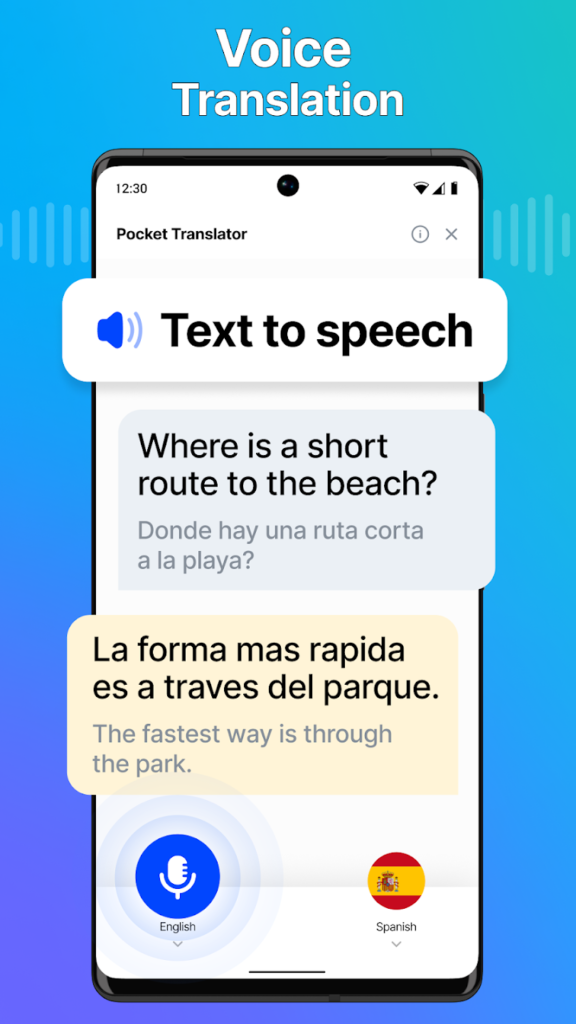
Key Highlights:
- Text and voice translation across platforms
- Browser extensions for quick access
- On-premise translation for secure environments
- Translation API for software integration
- Supports document and website translation
- Dictionary and usage examples included
Who It’s Best for:
- Businesses needing secure, offline translation tools
- Developers integrating translation into their apps
- Users translating content across various devices
- People needing support for less common platforms
- Professionals working with large text volumes
Contact Information:
- Google Play: play.google.com/store/apps/details

10. Translate All Languages
Translate All Languages is a mobile app that provides real-time text and voice translation for over 100 languages. Users can speak or type into the app and receive translations in another language with the option to hear the output. It also includes basic dictionary functions for looking up words and phrases, making it useful for language learners.
The app supports copying and sharing translated content and includes a simple user interface suitable for beginners. A history feature stores past translations for easy access. The voice recognition feature allows quick language switching and offers clear playback of results. Designed for daily use, the app works well for travelers, students, and casual users.



Key Highlights:
- Real-time voice and text translation
- Dictionary feature for word lookup
- Simple interface with copy and share options
- Translation history for recent searches
- Speech playback and voice recognition
Who It’s Best for:
- Users needing quick translations
- Students learning new languages
- Casual users needing speech-to-text translation
- Travelers needing voice support in new places
- People who want a simple, offline-friendly app
Contact Information:
- Google Play: play.google.com/store/apps/details

11. Translate to Screen
Translate to Screen focuses on real-time on-screen translation, allowing users to translate visible text directly on their device without switching apps. It works by detecting and translating text from games, messaging apps, or other interfaces using an overlay system. The app supports over 100 languages and includes OCR for scanning and translating text from images.
Additional features include translation bubbles, a floating icon for quick access, and the ability to copy translated text. Users can scan text on the screen or upload images to get translations. The app is designed for users who frequently interact with foreign content within other apps or games and need fast translations without switching windows.
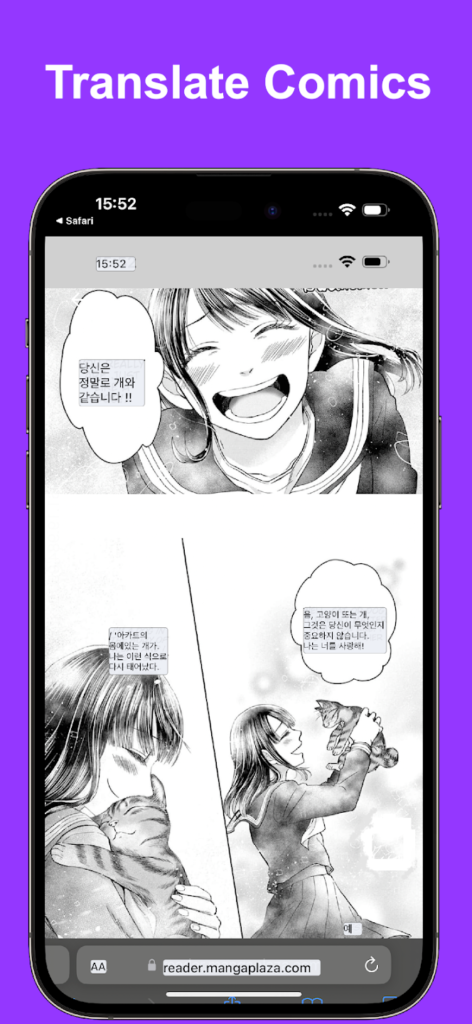


Key Highlights:
- On-screen translation using overlay features
- OCR-based text recognition and translation
- Translating bubbles and floating icons
- Works in apps, games, and with screenshots
Who It’s Best for:
- Users who translate app or game content
- People needing screen-level language help
- Roleplayers or chat users reading foreign messages
- Users who want to scan and translate image-based text
Contact Information:
- Google Play: play.google.com/store/apps/details

12. Translator (Luni)
Translator by Luni offers text and voice translation for various languages. The app uses Apple’s speech recognition to convert spoken words into real-time translations. Users can choose between male or female voice playback to help with pronunciation, and the history of all translations is synced across Apple devices through iCloud. This helps users continue conversations or revisit translations later from any Apple platform.
The app provides both free and paid versions, with the paid subscription removing ads and unlocking more features. It integrates services from Google Translate and Microsoft, combining their outputs for potentially broader coverage. Translator is designed for iPhone and works with recent versions of iOS. It’s a general-purpose tool that supports both simple conversations and ongoing language learning.
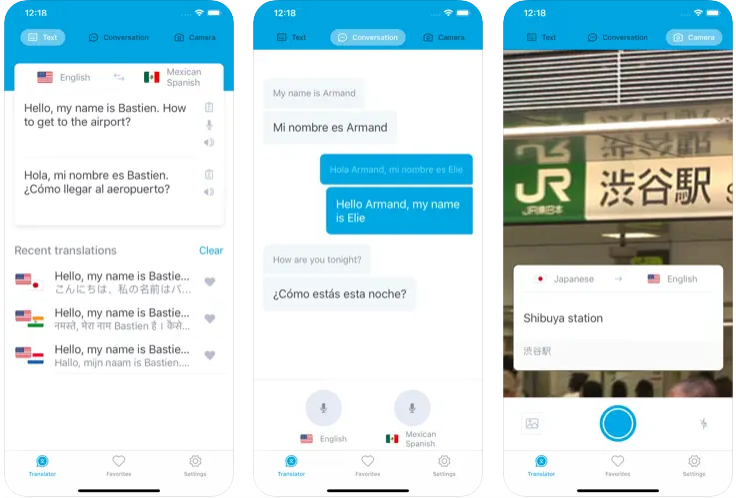
Key Highlights:
- Text and voice translation
- Real-time voice recognition with voice playback options
- Translation history synced across Apple devices
- Uses Google and Microsoft translation services
- Available in both free and subscription versions
Who It’s Best for:
- iPhone users who want to sync their translation history
- People needing both spoken and written translations
- Users who prefer Apple’s ecosystem
- Anyone looking for multi-platform translation tools
- Learners who benefit from pronunciation playback
Contact Information:
- App Store: apps.apple.com/ua/app/translator

13. Wordly
Wordly provides real-time multilingual translation and captioning for meetings, webinars, and events. Instead of one-on-one communication, their focus is on supporting groups where attendees may speak different languages. The Wordly App works with the Wordly interpretation platform and supports presenters on mobile, while participants can use browsers to follow along with translations and captions in their chosen language.
The platform supports dozens of languages and is used in live environments like conferences, employee onboarding sessions, and classroom settings. Users can hear or read translations without needing to download extra tools. Wordly emphasizes inclusivity and accessibility, aiming to make spoken content more understandable for multilingual audiences. It works with popular browsers and doesn’t require other participants to install the app.

Key Highlights:
- Real-time translation and captioning for events
- Browser access for attendees without installing an app
- Supports dozens of languages in group settings
- Designed for meetings, training, and conferences
- Works with a mobile app for presenters and browsers for others
Who It’s Best for:
- Event organizers with multilingual attendees
- Businesses needing interpretation for live sessions
- Schools and training programs hosting global participants
- Users who want voice and caption translation together
- Teams using browser-based meeting platforms
Contact Information:
- App Store: apps.apple.com/us/app/wordly-translator
- Website: www.wordly.ai/translation-app
- LinkedIn: www.linkedin.com/company/wordly
- YouTube: www.youtube.com/@wordly-translation
- Twitter: twitter.com/wordlyinc
- Facebook: www.facebook.com/WordlyTranslation
- Instagram: www.instagram.com/wordly.ai

14. EzDubs
EzDubs enables real-time translation across voice calls, video chats, messages, and voice memos. It is built to preserve the speaker’s original tone and emotion using voice cloning. This allows translated speech to sound similar to the original voice, maintaining natural flow during calls or conversations. It supports more than 30 languages and works even when the recipient does not have the app.
The app also supports instant text message translation and transcription of voice memos. Users can make external calls in different languages, and the translated speech plays with minimal delay. This makes EzDubs useful for international communication where both parties don’t speak the same language. The app runs on both Android and iOS and can be integrated into other platforms via API.

Key Highlights:
- Real-time voice translation with voice cloning
- Supports phone calls, video calls, and messages
- Works even if the other person doesn’t have the app
- Minimal delay for more natural conversations
- Offers an API for integration into external platforms
Who It’s Best for:
- People making international voice or video calls
- Users who want their translated voice to sound like them
- Teams working across language barriers
- Apps and services needing integrated translation APIs
- Anyone seeking low-latency, voice-based translation
Contact Information:
- App Store: apps.apple.com/us/app/ezdubs-translate-video-calls
- Google Play: play.google.com/store/apps/details

15. Reverso
Reverso offers translation services combined with language learning tools. The app allows users to translate words and expressions and then view those translations in full sentences drawn from real-world sources like movie subtitles, news articles, and official documents. This context-based approach helps users understand how terms are used in everyday language. It supports translation in 14 languages and includes voice search, pronunciation playback, and verb conjugations.
Beyond translation, Reverso includes interactive tools such as flashcards, quizzes, and games based on recent user searches. The app uses a spaced repetition system to help users retain vocabulary more effectively. Users can track their learning progress and organize terms into personalized vocabulary lists. Features like history, favorites, and offline access enhance usability for both learning and communication.

Key Highlights:
- Context-based translation with real sentence examples
- Flashcards, quizzes, and games for learning
- Voice search and native pronunciation playback
- Verb conjugation and synonyms support
- Offline access to history and favorites
Who It’s Best for:
- Users combining translation with vocabulary building
- Learners looking for context to understand usage
- People interested in grammar tools like conjugation
- Students and professionals improving language fluency
- Anyone needing offline access and structured learning
Contact Information:
- App Store: apps.apple.com/us/app/reverso-translate-and-learn
- Google Play: play.google.com/store/apps/details
- Website: context.reverso.net/translation/mobile-app
- Facebook: www.facebook.com/Reverso.net
- Twitter: twitter.com/ReversoEN
- Instagram: www.instagram.com/reverso_app
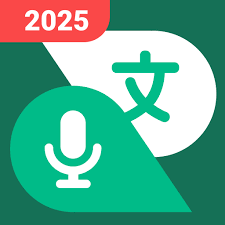
16. Talking Translator
Talking Translator offers instant voice and text translation in over 100 languages. Its main focus is real-time communication, making it useful in multilingual settings such as travel, business, or casual conversation. The app includes features like voice recognition, handwritten text translation, and speech playback. It also provides a “Shared View” mode that displays translated text on both users’ screens during conversations.
Additional tools include a notification panel with quick access to translation features and a personalized chat function for language practice. Users can adjust voice playback settings and apply various color themes to personalize the interface. Talking Translator includes functions like copy, share, favorites, and conversation history, making it practical for repeated use.
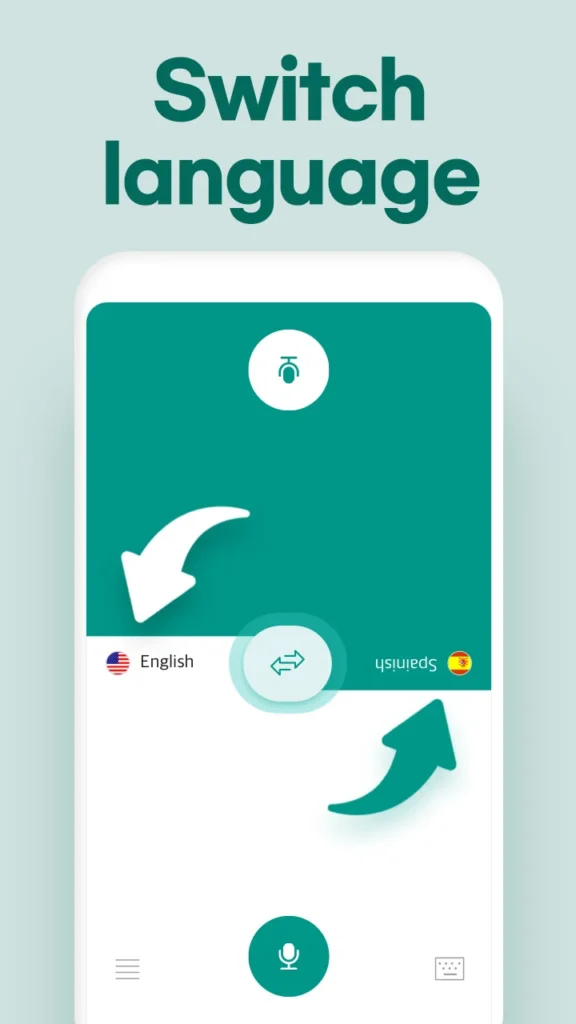


Key Highlights:
- Real-time voice and text translation
- Shared View for face-to-face chats
- Notification panel with quick access tools
- Voice settings for playback control
- Handwriting recognition for text input
Who It’s Best for:
- Travelers needing fast and clear translation
- People talking in person using visual aids
- Users practicing a language through conversation
- Those who want customizable themes and settings
- Learners who use voice and text input methods
Contact Information:
- Google Play: play.google.com/store/apps/details

17. Translate Me
Translate Me is a multi-feature translation app that supports over 100 languages and offers text, voice, and photo translation. It allows users to take photos or use screenshots to extract and translate text, which is useful when dealing with signs, documents, or menus. The app also includes a phrasebook with common expressions for travel or study.
It supports voice recognition for spoken translations and stores history, favorites, and transliterations. Additional functions include translating handwritten notes, scanned images, or graphical texts. Although some features require in-app purchases or waiting periods, the core functionality is focused on offering flexible input methods and supporting basic language learning needs.
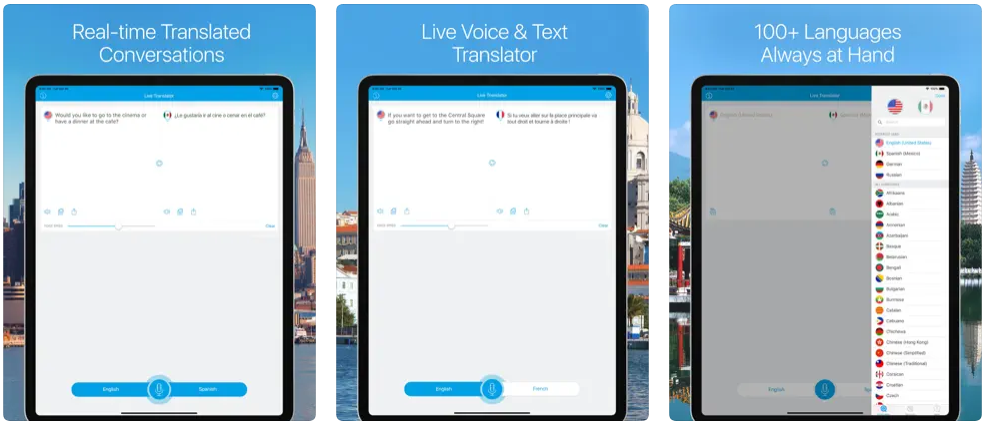
Key Highlights:
- Text, voice, and photo-based translation
- Phrasebook with useful expressions
- Supports handwritten and scanned text translation
- Voice recognition with speech playback
- Transliteration, favorites, and history features
Who It’s Best for:
- Users needing camera or image-based translation
- Travelers using signs, menus, or documents
- People practicing through visual and voice input
- Anyone needing basic tools for multiple input types
- Users with occasional or casual translation needs
Contact Information:
- App Store: apps.apple.com/us/app/translate-me-live-translator
- Website: neosus.net
Conclusion
Translation apps have become essential tools for everyday communication, travel, work, and language learning. Each app offers different features depending on how users plan to interact with other languages, whether it’s through text, voice, images, or live conversations. Some focus on context and learning, while others are built for instant communication or event-level multilingual support.
Choosing the right translation app depends on your needs, device, and how often you use these tools. Whether you’re looking for offline access, accurate phrase usage, or support in real-time calls or meetings, there’s an option that fits. The tools covered in this article reflect a range of practical services available to help users understand and communicate more clearly across languages.
